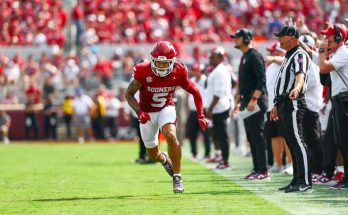In a move that stunned much of the hockey world and signaled a significant shift in direction for the New York Rangers, the team has officially traded veteran forward Chris Kreider to the Anaheim Ducks in exchange for promising young center Carey Terrance and a 2025 third-round draft pick. The Rangers also sent Anaheim their own 2025 fourth-round pick to complete the deal. While blockbuster trades are nothing new in the NHL, the symbolism and ramifications of this particular deal are profound, especially for a franchise long anchored by Kreider’s physical presence, leadership, and offensive contributions.
Chris Kreider has been the face of Rangers hockey for over a decade, a power forward with speed, toughness, and a knack for timely goals. Drafted 19th overall in 2009, he made his debut during the 2012 playoffs and immediately left a mark, scoring five goals in his first 18 postseason games. Since then, he has consistently delivered for New York—both on the scoresheet and in the locker room. Kreider’s evolution from a high-potential prospect into a cornerstone player was a key part of the Rangers’ identity over the past decade, and his departure will undoubtedly be felt by fans, teammates, and the front office alike.
However, the Rangers are clearly thinking about the future, and Carey Terrance represents a bold new chapter. Selected in the second round of the 2023 NHL Draft by Anaheim, Terrance is a young forward with tremendous upside. The 6-foot, 180-pound center brings speed, tenacity, and a nose for the net. At just 19 years old, he’s already earned a reputation as one of the more well-rounded two-way prospects in his class, having turned heads with his play for the Erie Otters in the OHL and during international competition. For a team like New York that is looking to inject youth and long-term cap flexibility into its core, Terrance is a strong addition.
For general manager Chris Drury, this trade is about balancing timelines. The Rangers have built a strong roster that includes stars like Artemi Panarin, Mika Zibanejad, and Adam Fox, but the team also faces looming cap concerns and a need to refresh its depth with younger, cost-controlled talent. Kreider’s contract, which carries a cap hit north of \$6 million annually through 2027, has become an increasingly difficult asset to manage. While Kreider has continued to produce—scoring over 30 goals in multiple recent seasons—he is on the wrong side of 30 and his physical style of play inevitably raises durability concerns down the line. By moving him now, the Rangers avoid diminishing returns and open up flexibility to reshape the roster around a younger nucleus.
From Anaheim’s perspective, the acquisition of Kreider marks a significant step forward in their rebuilding process. After spending several seasons at or near the bottom of the standings, the Ducks are looking to surround their talented young core—led by Trevor Zegras, Mason McTavish, and Leo Carlsson—with veteran leadership and proven scoring. Kreider’s arrival offers all of that and more. He’s a leader, a playoff-tested warrior, and the type of forward who can help stabilize a young locker room while teaching rising stars how to prepare and perform at a high level. Anaheim is betting that Kreider’s experience and ability to contribute immediately will accelerate their return to relevance in the Western Conference.
The inclusion of draft picks on both sides also reflects the subtle but important difference in team priorities. The Rangers upgrading from a fourth-rounder to a third-rounder is a small but calculated move, one that gives them slightly more ammunition in what is expected to be a deep and unpredictable 2025 draft class. For Anaheim, giving up that third-rounder is a price they’re willing to pay to gain a player they view as both a culture-setter and a bridge to their future. In many ways, this trade is a win-win—an honest exchange of assets between two franchises heading in different directions but sharing the common goal of sustained success.
For Rangers fans, the emotional toll of losing Kreider cannot be overstated. He wasn’t just a player—he was a symbol of the franchise’s grit and commitment. He fought through injuries, answered the bell in big moments, and served as an alternate captain with distinction. In the modern NHL, where player movement is constant and loyalty is often secondary to the salary cap, Kreider was one of the few who felt like a lifer. His community involvement, connection with the Madison Square Garden faithful, and long-standing presence in the lineup gave him a special place in the hearts of fans.
Yet, those same fans also understand the nature of the business. The NHL is a cap-driven league, and standing still is often a recipe for stagnation. The Rangers, eager to capitalize on their window of contention, know they must evolve. Carey Terrance brings a new dimension to the team—a faster, younger, more versatile profile that could flourish under the right developmental conditions. While it will take time for him to earn the same trust and adoration as Kreider, his potential is undeniable. With the right mentoring and support, he could be a key piece of the Rangers’ future.
Terrance’s early trajectory suggests a player who embraces responsibility and adapts quickly. His performance at the 2024 World Junior Championship for Team Canada showcased his maturity and two-way discipline, often being trusted in key defensive situations despite his youth. That’s the type of profile the Rangers have increasingly prioritized—players who can contribute in all three zones, elevate teammates, and buy into the team-first mentality that head coach Peter Laviolette has emphasized.
The transition for Kreider in Anaheim, meanwhile, might come with growing pains, but also new opportunities. The Ducks will likely slot him into a top-six role immediately, using his physical presence to complement the finesse and creativity of their younger players. On the power play, Kreider remains one of the league’s premier net-front specialists, and he could revitalize Anaheim’s struggling special teams with his ability to deflect pucks, battle in the crease, and finish in tight areas. His playoff pedigree will also be invaluable in a dressing room filled with players who have yet to experience meaningful games in April and May.
As the dust settles, both organizations can feel confident in the direction they’re moving. The Rangers, though bidding farewell to a beloved veteran, are acquiring a promising piece who could help them stay competitive well into the future. Anaheim, in turn, is gaining a leader and producer who can make an impact on and off the ice while their young core continues to mature. This deal isn’t just about today—it’s about building the type of teams that can compete consistently in an ever-evolving league.
Kreider’s departure also creates new opportunities for other Rangers forwards to step up. Players like Alexis Lafrenière and Kaapo Kakko may now see increased ice time and responsibility, potentially allowing them to reach new heights in their development. The arrival of Terrance, while likely to begin with a role in Hartford or on the third line, will eventually give the coaching staff more flexibility and options in matchups. It’s a natural evolution, one that signals a changing of the guard and the beginning of a new era for Rangers hockey.
Ultimately, the Kreider-Terrance trade will be judged by what happens over the next few seasons. If Terrance develops into a top-six contributor and the Rangers maintain their status as a playoff contender, the move will be hailed as a savvy piece of forward-thinking. If Kreider helps Anaheim return to postseason relevance and becomes a mentor to their young stars, the Ducks will look brilliant in hindsight. In the best-case scenario, both teams walk away winners.
For now, emotions run high and memories of Kreider’s countless big goals and gritty performances still linger. But the NHL never stops moving, and the Rangers have chosen to look forward. Carey Terrance may not yet be a household name in Manhattan, but he’ll have every chance to earn one. As the Blueshirts turn the page, they do so with a clear eye toward the future—one in which youth, speed, and vision lead the way. And as for Kreider, he leaves behind a legacy that will be remembered long after his final shift, wearing a new jersey and bringing his trademark intensity to a Ducks team eager to rise again.



